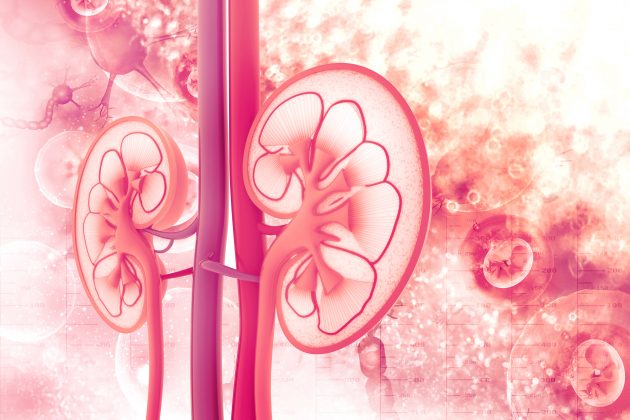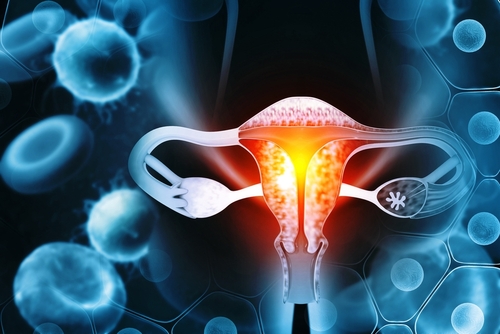End-stage renal disease (ESRD) is associated with a high mortality rate, reduced quality of life, and extensive healthcare use and spending. Kidney transplantation is the treatment of choice for patients with ESRD, however, most patients with ESRD are dependent on renal replacement therapy. Data from 2013 reveal that 63% of all patients with ESRD received hemodialysis, 7% received peritoneal dialysis, and 30% received a functioning renal transplant.
In the United States, Medicare is the primary insurer for individuals with ESRD. In 2016, there were 618,818 beneficiaries with ESRD with Medicare as the primary or secondary payer (81% of all patients in the United States with ESRD). Patients with ESRD comprised less than 1% of the Medicare population, yet beneficiaries with ESRD accounted for more than 7% of Medicare fee-for-service (FFS) payments.
During the past 10 years, the Centers for Medicare & Medicaid services launched initiatives designed to reduce Medicare expenditures while maintaining or enhancing quality of care. The Comprehensive ESRD Care (CEC) model is one such initiative. In the CEC model, dialysis facilities, nephrologists, and other providers and suppliers form ESRD Seamless Care Organizations (ESCOs) to coordinate care for beneficiaries with ESRD and are accountable for quality and financial outcomes for their aligned Medicare beneficiaries. ESCOs are eligible for shared savings if they lower Medicare Part A and Part B payments and meet quality standards.
A total of 13 ESCOs joined the CEC model on October 1, 2015 (wave 1). An additional 24 ESCOs joined the CEC model on January 1, 2017 (wave 2).
Researchers, led by Grecia Marrufo, PhD, performed an economic evaluation to examine the association of the CEC model with Medicare payments, healthcare use, and quality of care. Results of the evaluation were reported in JAMA Internal Medicine [2020;180(6):852-860].
The evaluation utilized a difference-in-differences design to estimate the change in outcomes for 73,094 Medicare FFS beneficiaries aligned to CEC dialysis facilities between the baseline (January 2014 to March 2015) and intervention periods (from October 2015 to December 2017) relative to 60,464 beneficiaries at matched dialysis facilities. The primary outcomes and measures were Medicare total and service-specific payments per beneficiary per month (PBPM); hospitalizations, readmissions, and emergency department (ED) visits; and select quality measures.
There were differences between CEC-participating facilities and nonparticipating facilities in several market-level and facility-level characteristics. Compared with nonparticipating facilities (n=4019) prior to the start of the model, CEC facilities (n=685) were less rural (mean percentage rural, 8% vs 16%) and were located in larger markets that had a lower mean proportion of white beneficiaries with ESRD (59% vs 63%) and had higher median incomes ($56,147 vs $52,283) and more specialists per 10,000 population.
CEC facilities had more dialysis stations (mean, 19.7 vs 18.3), lowered standardized risk-adjusted morality rates (mean, 0.95 vs 1.01), were more likely to be Fresenius facilities (mean, 72% vs 21%), and were less likely to provide peritoneal services (mean, 8% vs 9%).
In the pre-CEC period, mean total Medicare payments to providers were $6315 PBPM; in the intervention period, mean total Medicare payments to providers were $6100 PBPM. In the comparison group, mean total Medicare payments decreased from $6317 PBPM in the pre-CEC period to $6315 PBPM in the intervention period. Relative to comparison beneficiaries, the difference in mean payments was a net decrease of $114 PBPM (95% confidence interval [CI], –$202 to –$26; P=.01) for CEC beneficiaries, amounting to a savings of 1.8%. The decreases were associated primarily with decreases in payments for hospitalizations and readmissions. However, when shared savings payments of $247 PBPM are considered, Medicare experienced net losses of $78 PBPM (95% CI, –$8 to $164; P=.07).
Relative to the comparison group, there was a decrease of $68 PBPM (95% CI, –$112 to –$24; P=.003) in inpatient payments, and a decrease in readmission payments of $29 PBPM (95% CI, –$57 to –$2; P=.04). There was also a decrease of $10 PBPM (95% CI, –$19 to –$0.49; P=.04) in payments for hospitalizations related to ESRD complications for CEC beneficiaries relative to the comparison group. Total dialysis payments increased for CEC beneficiaries relative to the comparison group by $15 PBPM (95% CI, $7-$24; P<.001). All payment results were associated primarily with wave 1 ESCOs.
Relative to the comparison group, CEC beneficiaries had –5.0 fewer hospitalizations per 1000 beneficiaries per month (95% CI, –8.5 to –1.6; P=.004), a 4% relative decrease. The decrease in hospitalizations was also associated with wave 1 ESCOs. Overall, there was trend toward fewer ED visits among CEC beneficiaries compared with the comparison group; the difference did not reach statistical significance. There was no overall change in rates of hospital readmission or emergency dialysis sessions. There was an increase in outpatient dialysis sessions of 71.3 (95% CI, 27.4-115.3; P=.001) per 1000 beneficiaries per month overall, an increase of 0.58%. The results were due primarily to wave 1.
In analyses of quality-of-care indicators, the CEC model was associated with improvements. CEC model beneficiaries with a catheter as vascular access for periods >90 days decreased by 0.78 percentage points (95% CI, –1.36 to –0.19 percentage points; P=.01) relative to the comparison group, an 8.3% difference per month. Beneficiaries in CEC models were also 0.11 percentage points less likely (95% CI, –0.20 to –0.02 percentage points; P=.01) to require hospitalization in a given month due to an ESRD-related complication, a 6.4% difference per month. The results were associated primarily with wave 1 ESCOs in performance year 1. There were no associations between the CEC model and hospitalizations for complications related to vascular access.
The researchers cited some limitations to the study findings, including the possibility that the 37 ESCOs were not representative of all Medicare dialysis providers, limiting the generalizability of the findings; the characteristics selected for matching and the specificity of the data may not adequately account for all differences between CEC beneficiaries and the comparison group; and not comparing outcomes for patients with ESRD in the CEC with those in other accountable care organization (ACO) programs.
In conclusion, the researchers said, “During the first two performance years of the CEC, Medicare payments decreased by 2% while quality improved, which suggests that a specialty-centered ACO model can deliver more efficient care to a clinically complex and vulnerable population. The data suggest that ensuring adequate dialysis, thereby reducing hospitalizations, was a likely mechanism. Further analysis is required to assess the longer-term outcomes of the CEC model and to consider the applicability of these results to populations with other complex chronic conditions.”
Takeaway Points
- In October 2015, the Centers for Medicare & Medicaid Services launched the Comprehensive ESRD [End-Stage Renal Disease] Care (CEC) model. Results of a recent economic evaluation of the CEC model relative to non-CEC beneficiaries were reported in JAMA Internal Medicine.
- In the first two performance years, the CEC model resulted in lower Medicare payments or providers and improved performance healthcare use and quality-of-care measures.
- Lower costs were associated primarily with reduced numbers of hospitalization and readmission; Medicare experienced net losses when shared savings payments were taken into account.
Credit: Original article published here.










